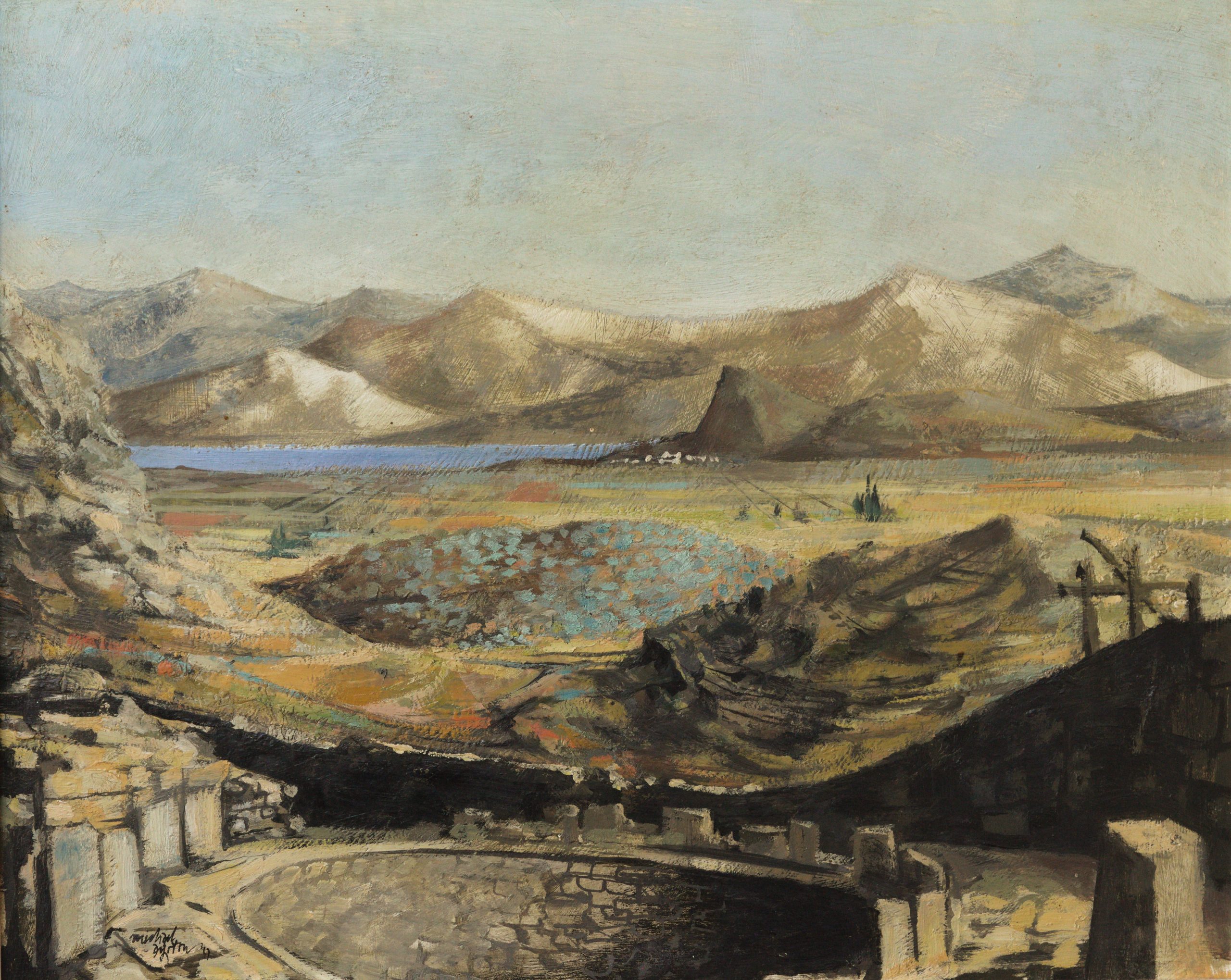My Favourite Painting: Norman Hammond
Norman Hammond, the archaeology correspondent of The Times chooses a work by Michael Ayrton.


Norman Hammond on Mycenae:I: towards Argos by Michael Ayrton
'I met Mycenae on a friend’s wall, my first week at Cambridge, a gift from the artist that she had brought to lighten the Fenland gloom. I was fresh back from Greece to read Archaeology and the panorama was what I had gazed across that summer, but here somehow concentrated, the essence of the Argolid.
‘Grave Circle A at my feet, the Ottoman aqueduct and the cypresses of Koutsopodi leading to the distant white of Diomedes’s Argos and the blue of the Aegean, it was still almost the view that Agamemnon saw as he left for Troy some three millennia earlier.'
Prof Norman Hammond has been archaeology correspondent of The Times since 1967. His book The Archaeology of Afghanistan (co-edited with Warwick Ball) was published last year.
John McEwen on Michael Ayrton
Michael Ayrton was an illustrator, painter, sculptor, stage designer, critic (The Spectator), art historian, novelist, poet and even a pundit on The Brains Trust, the wireless precursor of the BBC’s Question Time. He was born Michael Ayrton Gould, son of Gerald Gould, author and fellow of Merton College, Oxford, and Barbara Ayrton-Gould, suffragette, later Labour MP and party chair, who was imprisoned in 1912 for smashing store windows.
Expelled from school at 14, Ayrton was bent on being an artist from an early age, much to his father’s disappointment. He studied at Heatherley School of Fine Art and St John’s Wood Art School, then shared a Paris studio with John Minton. They were enthused by ‘neo-romantic art’ through exiled Russian artists Eugene Berman and Pavel Tchelitchew. Ayrton’s blend of Modernism and ancient-Greek subjects was influenced by Serge Lifar’s percussive dance ballet Icare.
After the First World War, Ayrton visited Greece many times, spurred by the rich symbolism of the legendary creator Daedalus, father of Icarus, his labyrinth and the minotaur it housed.
The ancient site of Mycenae is near the Peloponnese coast. Ayrton has painted the view from Grave Circle A, close to the Bronze Age burials excavated by Heinrich Schliemann in 1876. He shows the Pontinos mountains closer than they are in reality; the gallows-like structure beyond the citadel wall is probably lifting gear for work being done on the tholos tombs ‘of Aegisthus’ and ‘Clytemnestra’. In The Odyssey, Mycenae king Agamemnon is murdered on his return from the Trojan war by his queen, Clytemnestra, and her lover, Aegisthus.
Next year is Ayrton’s centenary, with several exhibitions planned.

In focus: How galleries and art dealers have shifted to showing and selling online
Galleries and dealers are using the difficulty of the lockdown to showcase their wares in virtual forms, from wartime oils
Exquisite houses, the beauty of Nature, and how to get the most from your life, straight to your inbox.

Leweston Manor: The uniquely charming house where Georgian architecture meets Art Deco interiors
Leweston Manor is a rare example of an Art Deco interior surviving within a Georgian building — and it's in daily
Country Life is unlike any other magazine: the only glossy weekly on the newsstand and the only magazine that has been guest-edited by His Majesty The King not once, but twice. It is a celebration of modern rural life and all its diverse joys and pleasures — that was first published in Queen Victoria's Diamond Jubilee year. Our eclectic mixture of witty and informative content — from the most up-to-date property news and commentary and a coveted glimpse inside some of the UK's best houses and gardens, to gardening, the arts and interior design, written by experts in their field — still cannot be found in print or online, anywhere else.
